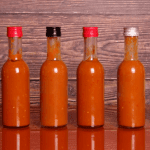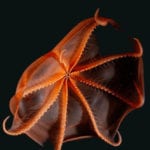 History
History  History
History  Technology
Technology Top 10 Everyday Tech Buzzwords That Hide a Darker Past
 Humans
Humans 10 Everyday Human Behaviors That Are Actually Survival Instincts
 Animals
Animals 10 Animals That Humiliated and Harmed Historical Leaders
 History
History 10 Most Influential Protests in Modern History
 Creepy
Creepy 10 More Representations of Death from Myth, Legend, and Folktale
 Technology
Technology 10 Scientific Breakthroughs of 2025 That’ll Change Everything
 Our World
Our World 10 Ways Icelandic Culture Makes Other Countries Look Boring
 Misconceptions
Misconceptions 10 Common Misconceptions About the Victorian Era
 Mysteries
Mysteries 10 Strange Unexplained Mysteries of 2025
 History
History 10 Things You Didn’t Know About the American National Anthem
 Technology
Technology Top 10 Everyday Tech Buzzwords That Hide a Darker Past
 Humans
Humans 10 Everyday Human Behaviors That Are Actually Survival Instincts
Who's Behind Listverse?

Jamie Frater
Head Editor
Jamie founded Listverse due to an insatiable desire to share fascinating, obscure, and bizarre facts. He has been a guest speaker on numerous national radio and television stations and is a five time published author.
More About Us Animals
Animals 10 Animals That Humiliated and Harmed Historical Leaders
 History
History 10 Most Influential Protests in Modern History
 Creepy
Creepy 10 More Representations of Death from Myth, Legend, and Folktale
 Technology
Technology 10 Scientific Breakthroughs of 2025 That’ll Change Everything
 Our World
Our World 10 Ways Icelandic Culture Makes Other Countries Look Boring
 Misconceptions
Misconceptions 10 Common Misconceptions About the Victorian Era
 Mysteries
Mysteries 10 Strange Unexplained Mysteries of 2025
10 Cool and Creepy Facts about Collecting Tears
From sadness to joy to chopping onions, all kinds of things can make people tear up. And while most consider their tears to be nothing more than salty water to be wiped away, some curious folk collect them instead. For the most part, they are the usual suspects: scientists, artists, and entrepreneurs—people who are naturally inclined to study the properties and uses of things that everybody else overlooks, even when those things are bodily fluids.
And they are giving new meanings to the phrase “I’ll give you something to cry about.” Thanks to them, tears might one day be widely used in life-saving tests, power new technologies, or make artisanal foods and drinks even more unique and personal. Here are ten of the most quirky, cool, and crazy tales of why people have—or have not—collected tears.
Related: 10 Facts About Body Hair That Will Make You Sick
10 Tears Could Be Collected to Monitor Health
It would be more scientifically accurate to describe tears as filtered blood than salty water. They contain traces of glucose and other chemicals and enzymes that are found in blood, so scientists naturally started to wonder whether they could discover markers of illness in tears. It seems that the answer is yes. People quite literally leak information.
Markers for several terrible diseases, including cancer and Parkinson’s, can be found in tears. There is already a technology that enables the use of tears as an alternative to a mammogram in breast cancer screenings. Beyond diseases, the tears of mice have also been found to contain markers of environmental pollution and drug abuse.
These are important discoveries as, unlike blood samples, tears can be collected by non-invasive means. A small amount is always present in people’s eyes, which means that they have the potential to be used for continuous health monitoring. One organization looking into this is NASA. In 2018, they suggested that astronauts’ tears might be used to learn more about the effects of long stretches in space on human health.[1]
9 They Probably Were Not Collected While Mourning in the Past
Modern scientific tests have cast doubt on several common claims that have been made about tear-collecting practices in the past. They surround a type of narrow glass bottle, often beautifully decorated, known as a “lachrymatory” or “tear catcher.”
The presence of these bottles in ancient Greek and Roman tombs led people to believe that they must be related to mourning, so a story developed that mourners would cry into these bottles and then bury them with the body. They were said to symbolize the person’s status—many tears shed after they died meant they must have been well-respected in life.
The Victorians were also said to have used the bottles while mourning. They would fill the bottle with tears, and the day when all the tears evaporated would mark the end of their mourning period. However, scholars have a less romantic explanation: They were perfume bottles.
The stories were likely the result of savvy marketing by people who wanted to sell them. However, it must have worked because many people buy them today with the understanding that they are tear catchers and use them, presumably, to catch tears.[2]
8 Tears Can Be Used to Brew Bitters
Among the strangest uses of tears to date is using them to make a bottle of bitters more, well, bitter. Emotionally, that is. This was the idea of food art firm Bompas & Parr, which held a workshop in 2015 to teach people how to brew bitters from their tears. However, they did promise that the impact of tears on the flavor of the drinks would be minimal.
The unusual ingredient was described as an “emotional infusion” that would be overpowered by the alcohol and other herbs and spices. Drinkers could be confident that it would not be like sipping saline solution. To make sure that people who attended the workshop would actually be able to shed some tears, the team set up a “corner of repose” and also had some of the menthol tear sticks commonly used by actors on hand.
Interestingly, the project was partially inspired by the lachrymatory myth. Still, these bitters were not meant to be made for mourning or drowning one’s sorrows. Instead, it was suggested that they be given as Christmas gifts.[3]
7 Bottled Tears Helped Promote Mental Health Awareness
The fame that comes from reality television can be difficult to sustain. Even when they have been on popular shows, contestants drawn from the public typically only have a short time to capitalize on their fame before they fade out of the public consciousness.
In 2017, Chris Hughes, a British farmer who found fame after starring in the hit show Love Island, seemed to be making the most of his newfound celebrity by starting his own unique brand of mineral water. “L’Eau de Chris” was, according to the bottle’s label, “mineral water infused with a Chris Hughes tear.” The bizarre product was unveiled in a black and white promotional video on Hughes’s social media, which showed a tear rolling down his cheek and into the bottle.
Some people were understandably disgusted and questioned whether it could be hygienic. However, they had nothing to fear. The tear water was revealed the next day as a publicity stunt to promote World Mental Health Day. In another video, Hughes explained how it was “ludicrous that men bottle up their emotions every single day.”[4]
6 The Noah Cyrus Tears Hoax
Chris Hughes was not the only one who was kidding about selling his bottled tears. Back in 2018, singer Noah Cyrus saw a way to turn her rough breakup with rapper Lil Xan into a marketing opportunity. The daughter of Billy Ray and sister of Miley released a line of merchandise referencing her sadness and broken heart. It included a T-shirt bearing her famous father’s face with the words “achy, breaky,” but the most headline-grabbing item was a bottle of her tears, priced at a fittingly eye-watering $12,000.
While it is not totally unbelievable that a celebrity would bottle their tears and sell them—Scarlett Johansson once auctioned off a used tissue, and William Shatner sold a kidney stone—this was purely a stunt. Noah probably did not expect anyone to try to buy them. However, the young singer underestimated the power of parasocial relationships. One of her fans started a GoFundMe campaign to buy the bottle and received over $1,000 in donations. Cyrus had to step in, offering to reimburse those who had donated and give them a backstage pass to her show.[5]
5 Tears Have Been Used to Make Cheese
Synthetic biology is a branch of science that deals with how living things can be changed to give them new characteristics. They can be big things, like animals, or small things, such as bacteria and viruses. The field could help a wide range of industries, including medicine, farming, and cheesemaking.
The year 2013 saw a collaboration in the latter between the American scientist Christina Agapakis and Norwegian scent expert Sissel Tolaas. They gathered bacteria from human bodies, which they then grew in milk to make cheeses. Some of it came from the tears of artist Olafur Eliasson, while writer Michael Pollan gave some from his belly button.
The cheeses were said to have smelled like the body odor of their donors, and they would have tasted like them, too, if they had been created for eating. However, they were part of a display at the Science Gallery in Dublin, which aimed to help people overcome cultural fears about micro-organisms and to draw attention to the potential of bacteria.[6]
4 The New Pepper Spray?
Okay, nobody is really suggesting that squirting tears at someone is going to be a good way to defend against an attacker. However, research from 2023 showed that there is a self-defense property to tears, or at least women’s tears. The study showed that male aggression can be reduced by up to 43.7% if men smell women’s tears, and the effect happens because tears alter their brain activity.
The tears used in the study were collected from volunteer donors who could cry with ease. Because the study wanted to use emotional tears specifically, the women were made to watch a sad film clip and collect their tears in a vial once per day for up to 25 days. If that sounds like a lot, it is because the volume of tears people produce in a single crying episode is not very much. The average donation only yielded 1.6 ml.
This might explain why most research into social chemical signals in humans has focused on sweat. The study’s results match what had already been found in rats, leading scientists to suggest that tears in all mammals might serve to reduce aggression.[7]
3 Collecting Tears on the Canvas
It took six women to cry out enough tears to be used in the aggression study, but the Argentinian artist Leandro Granato cried out an unbelievable 800 ml all by himself to produce one of his paintings. This is not because he needs to plumb the depths of his psyche or be struck by a devastating tragedy to find inspiration. In fact, he is not limited to genuinely emotional tears. There is only one condition with his tear collecting—he needs his tears to contain paint.
This he achieves by snorting the colors up his nose. When he was a child, he noticed that he could make liquids inserted into his nose come out of his eye. Rather than just crying, he can actually squirt the paint from his eye, which is how he makes the abstract splatters that characterize his paintings. Understandably, even his family thought he was mad when he decided to make his living using this technique, which he calls eye-painting. His paintings, however, have sold for over $1,000.[8]
2 The Topography of Tears
Another visual artist who spent years collecting her tears is photographer Rose-Lynn Fisher. Following the loss of a friend whom she had just reconnected with after many years, Fisher was both grieving and grateful for the short time they had together. Naturally, there were a lot of tears, and one day, she suddenly felt curious to see what her tears looked like up close.
She collected a tear on a glass slide and magnified it 100 times using a microscopy camera, and the result looked like a bird’s eye view of a strange land. She would spend the next ten years carrying slides with her to collect tear samples whenever she cried, be it from sadness, happiness, or chopping onions.
Not every tear was worthy of a place on the project, though. Fisher still exercised her artistic sensibility and only published what she thought were the most meaningful and visually interesting pictures. The project, called “The Topography of Tears,” captured what Fisher described as her “emotional terrain.”[9]
1 Smart Contact Lenses Could Be Powered by Tears
Creating augmented reality using headsets and handheld devices might still seem like a recent development, but things could move on quickly, thanks to researchers at Nanyang Technological University in Singapore. They created a tiny battery that would be perfect for powering smart contact lenses. This is because it can be charged using tears, which means it could theoretically charge itself while in use.
The battery is less than a millimeter thick but can produce enough power to sustain a device for a day. Although it has been known for some time that the lysozyme protein found in tears can produce electricity if placed under high enough pressure, this is not what the Singapore team’s battery uses.
Instead, theirs makes use of the sodium and chloride ions which are also present in tears. Another advantage is that the batteries are biocompatible, which means they are made from materials that are safe for the human eye. Despite the electricity, they do not even require metal wires.[10]








